Wednesday 28th and Thursday 29th September 2022
Leaving Chioggia, the day was overcast and windy as we crossed the Laguna, passed through the Moranzani Lock and turned up the Riviera del Brenta.

Having passed through the lock, you have to ring ahead to the on-call teams to arrange for the swing bridges to be opened. At the first bridge, we met a pleasant Swiss family who had arrived in Malcontenta shortly before us and were waiting to be let through. We both assumed we had arrived during the lunch break.
A member of the team arrived at the allotted time to open the first bridge electronically and once both boats had passed through he closed the bridge and drove to open the next one. We continued on up the canal in this way, in tandem with the Swiss family, leapfrogging the workman, who was joined by a colleague at one of the bridges which needed to be manually operated.
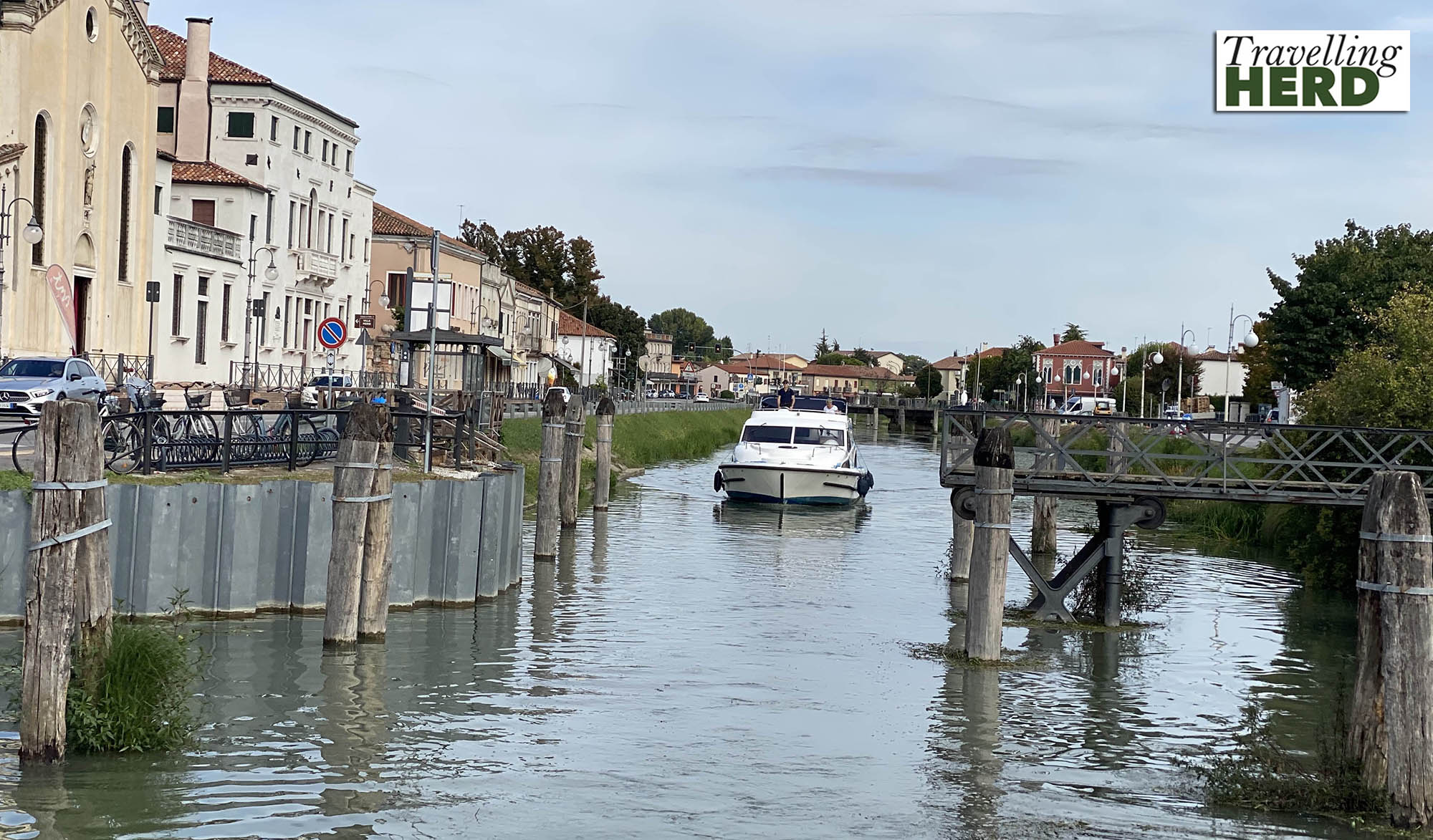
As we waved goodbye to the workmen, we agreed to meet them the following day at the last bridge so that we could do the journey in reverse and head back to Venice. Robert suggested 09:00 but we were firmly told 09:30. We thought this might be to ensure time for a leisurely breakfast.
We had decided to stop in Mira but our travelling companions had told us they would be going on further so Robert pulled over to let them past to approach the lock there. Unfortunately this courtesy was wasted as in the interim they had decided they would also stop in Mira. Even more unfortunately, when Robert tried to move off he found that we had run aground. Several minutes later having shifted all the ballast (crew) to the port side and moved forwards and backwards in minute increments we managed to re-float the Caprice. Fortunately there was space for two boats and the Swiss family kindly caught the ropes and helped us to moor.

Subsequently consulting the waterways map, we realised that the point where Robert had courteously pulled over was clearly marked with a warning sign and the words ‘shallow water’.
The Riviera del Brenta runs from the Laguna all the way to Padova. Originally the area was farmed to provide food for the residents of Venice who had no access to agricultural land. Subsequently, rich Venetian families who had a palazzo in Venice also built a summer villa on their farm along the banks of the Riviera del Brenta. Some of these grand summer retreats are now hotels and some are still privately owned but when we stopped we found the Villa Widmann Rezzonico Foscari was open to visitors that day.
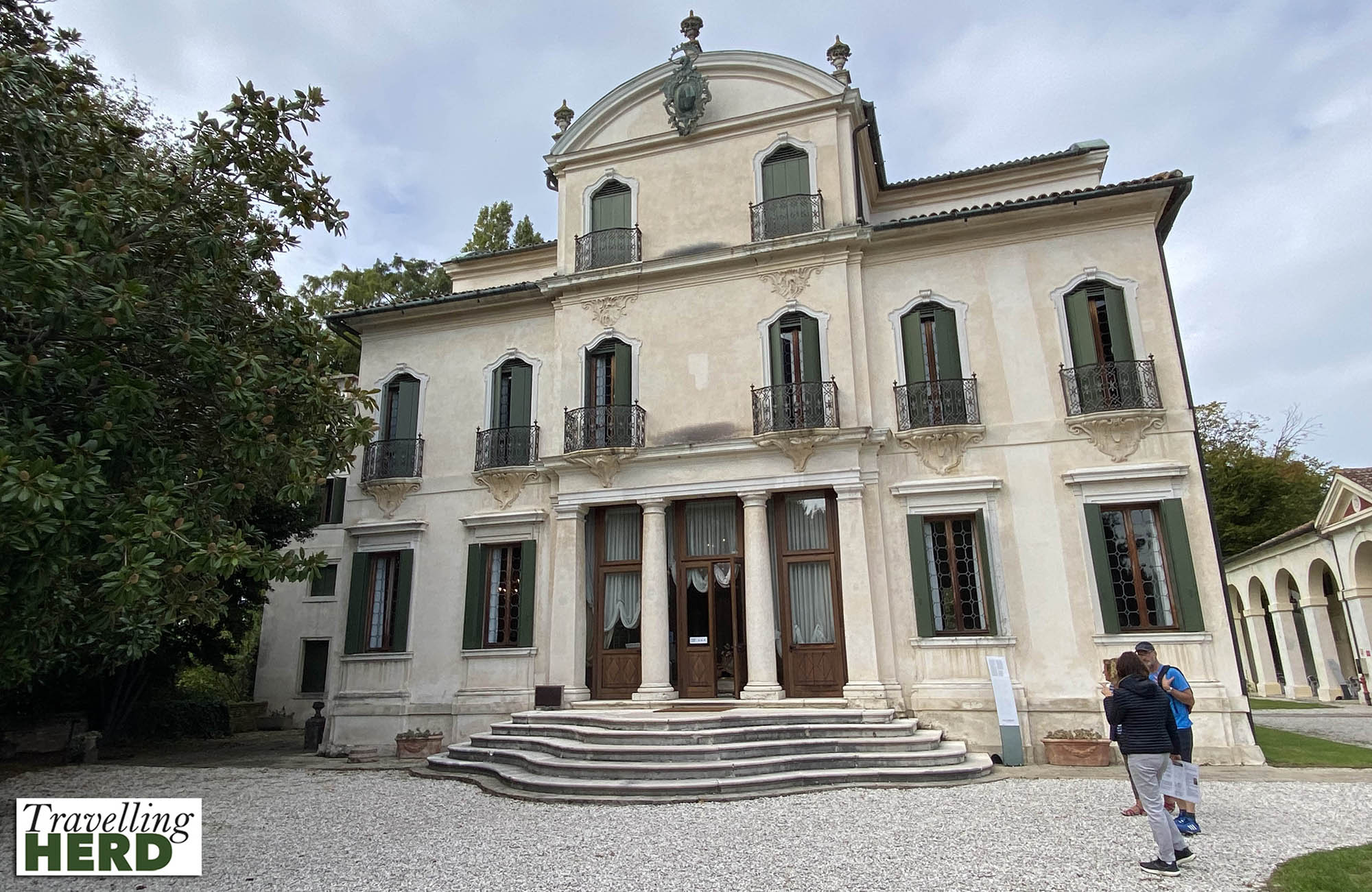
Robert opted to investigate the town and restaurants for later and Matilda, Martin and Liz went to visit the villa. We arrived at the ticket office in the barchessa, which is Venetian dialect for a ‘rural service building’, and although it was used for storing hay during the 1700s it had very grand colonnades, just visible on the right in the photo above. The lady selling tickets seemed so pleased to see us and told us that we would have the place to ourselves, although a few other visitors did appear.
The house itself was built in 1719 and was occupied until 1980. The Hall of the Festivities rises two stories high and has a wrought iron and brass balcony with four rounded corners were the musicians were placed. All the rooms on the upper floor have access onto the balcony.
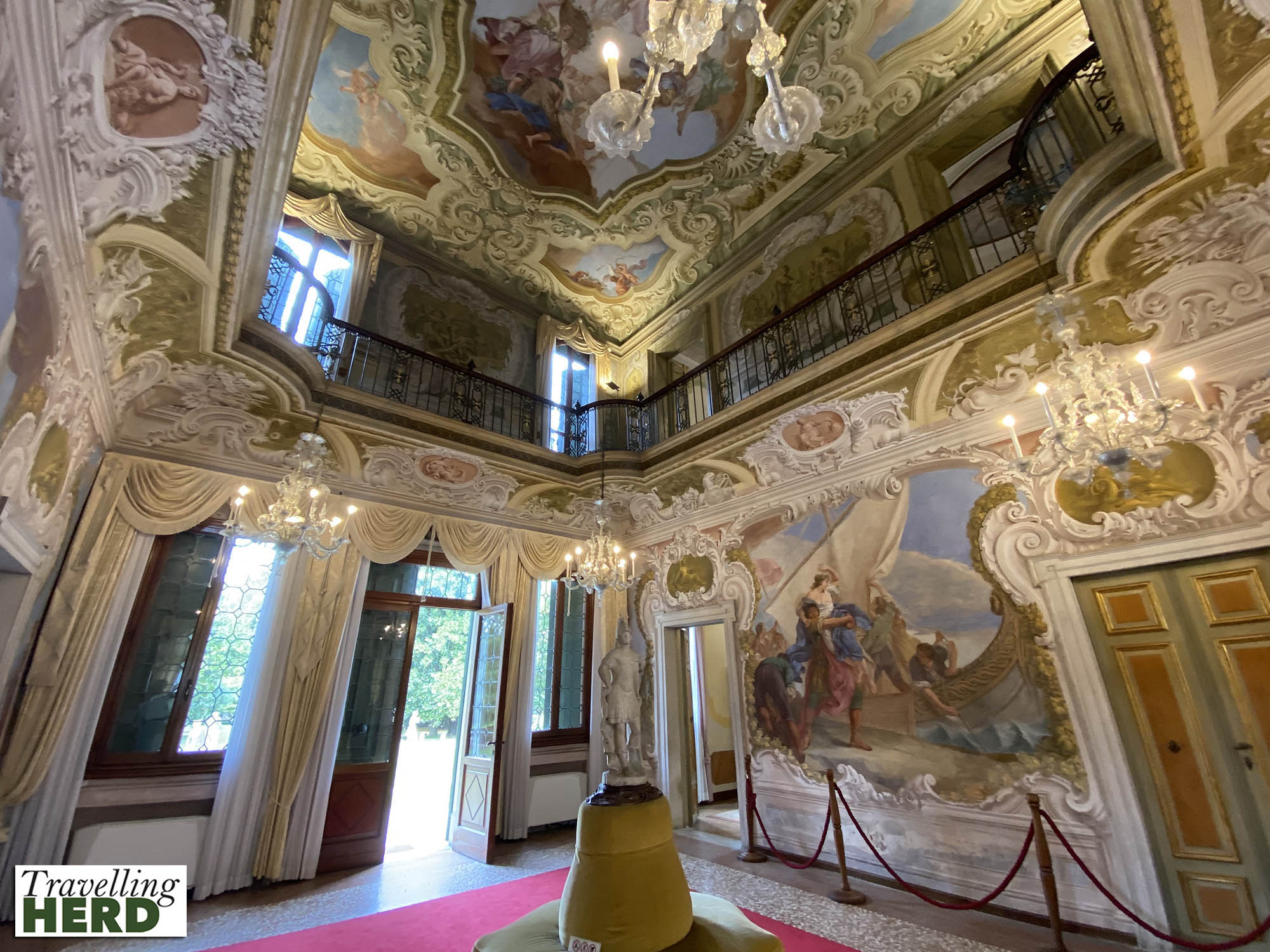
Sadly Robert was not as successful in his search for a restaurant and we returned to the boat to eat.
The following morning we set off with the Swiss family for our rendezvous with the workmen. One bridge pivoted around a central point mid-river and was hand operated. When it is clear for boats to pass, both watermen are stranded on the bridge in the middle of the waterway. Ironically, if the mechanism broke down at this point they would need to call on the people on the boats for assistance.
As we approached the Moranzani Lock again, two large tourist boats were emerging and we realised that the workmen had not been scheduling matters to suit their own [breakfast] plans but to ensure that they would be available to escort these two passenger vessels back through the bridges.
Both of our much smaller boats fitted easily into the Moranzani Lock.
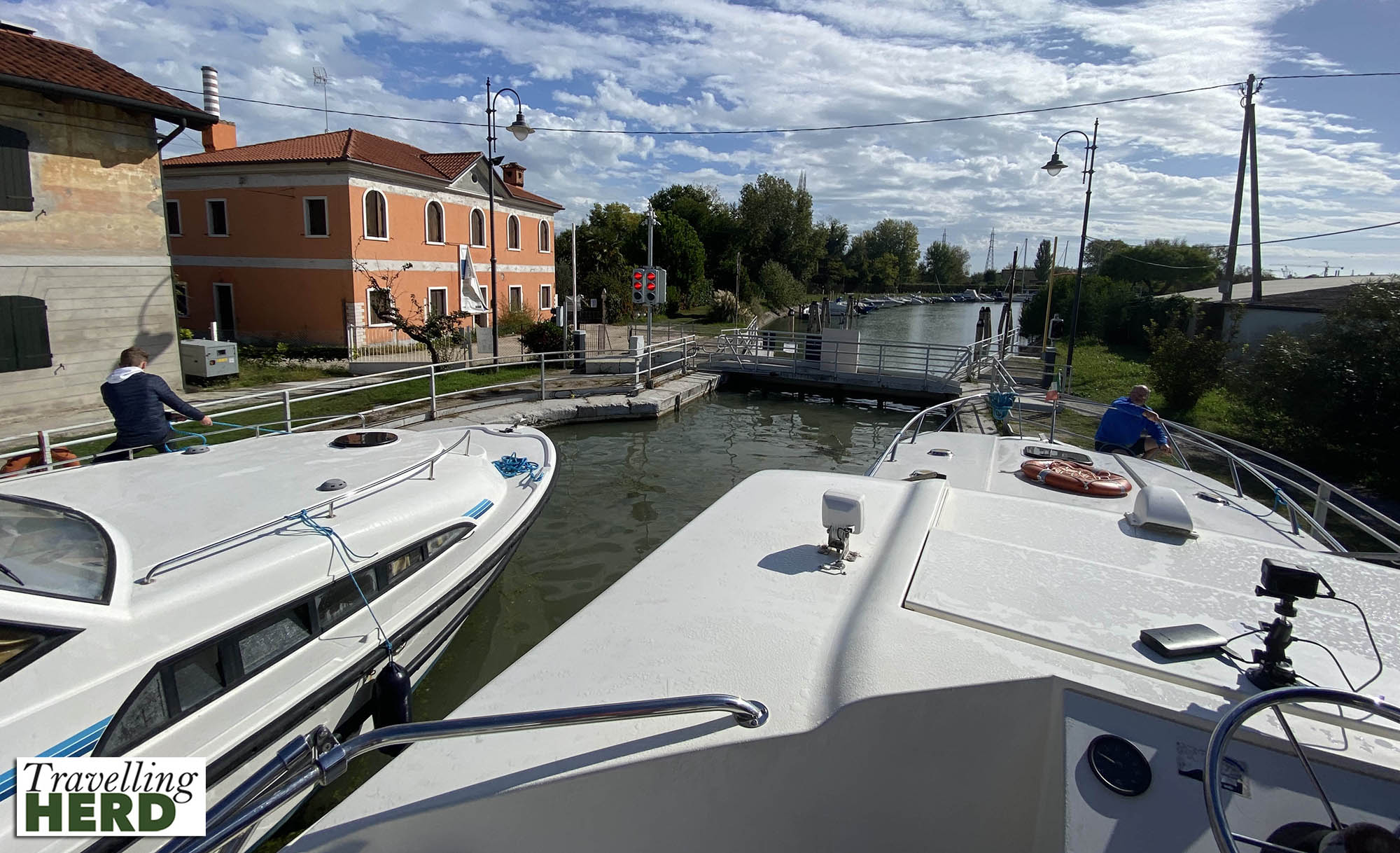
On the return journey, Matilda was pleased to see the Villa Foscari, designed by Andrea Palladio and built between 1558 and 1560, as she had missed this on the previous day. It is sometimes suggested that this was the home of the character Portia in Shakespeare’s The Merchant of Venice. The villa was allegedly nicknamed La Malcontenta after the wife of one of the Foscaris was locked up here when she failed to perform her conjugal duty. The area is now known as Malcontenta.
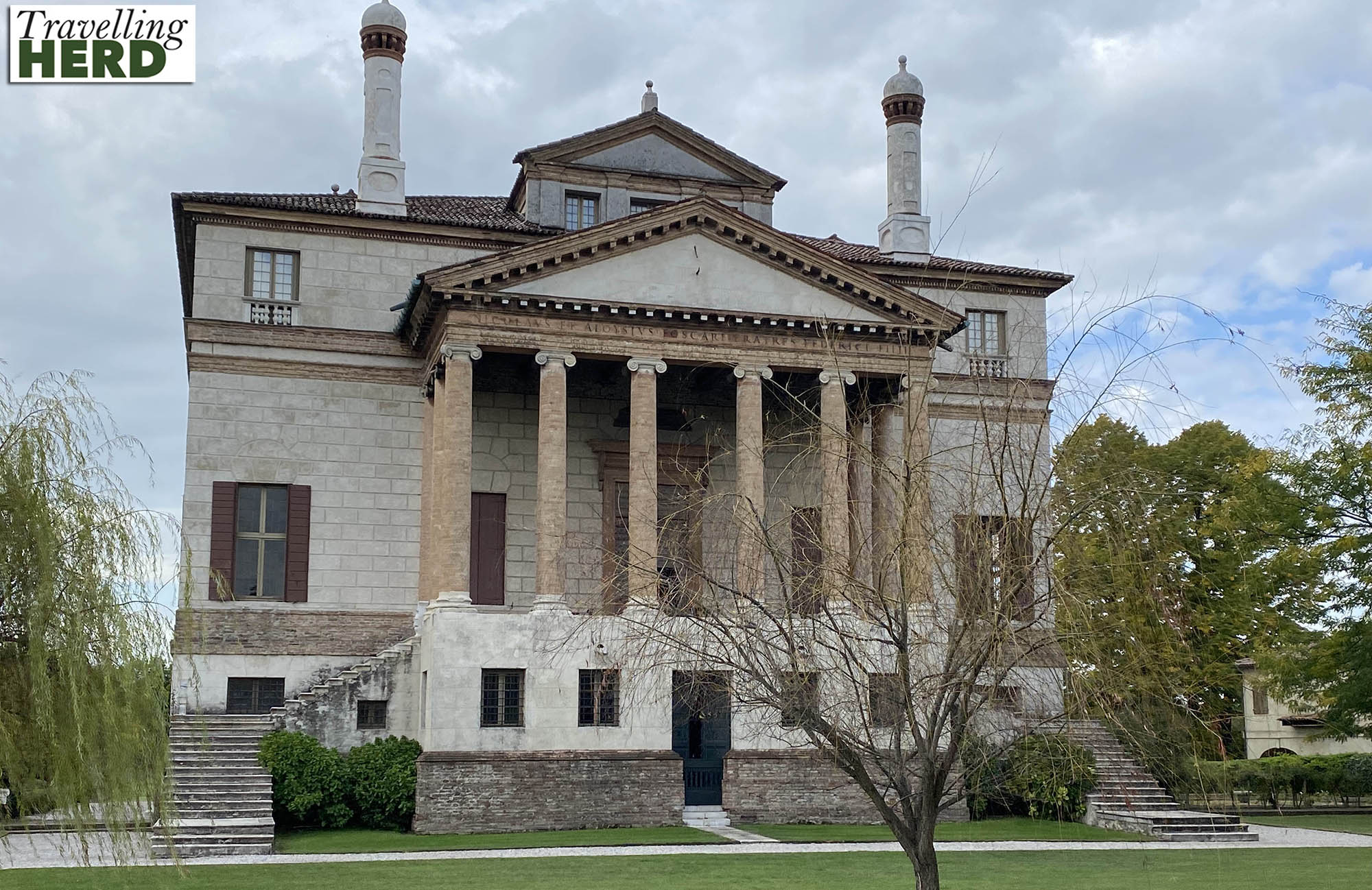
Hired boats such as ours are forbidden from cruising down the Grand Canal and are promptly stopped and fined €500 for any infringements. The boats are fitted with GPS trackers and the company monitors movements to help to ensure there are no incidents. At the briefing, Robert and Martin had been informed that the previous week, before the company had time to contact the people by phone to alert them that they were transgressing the rules, the police had already stopped and fined them.
We would not make such an expensive error.
We would, however, be allowed to cruise along the Giudecca Canal.
This was an opportunity not to be missed.
The volume of traffic makes it quite a bumpy ride.

There is nothing quite like seeing the glories of Venice from the bridge of your own boat.
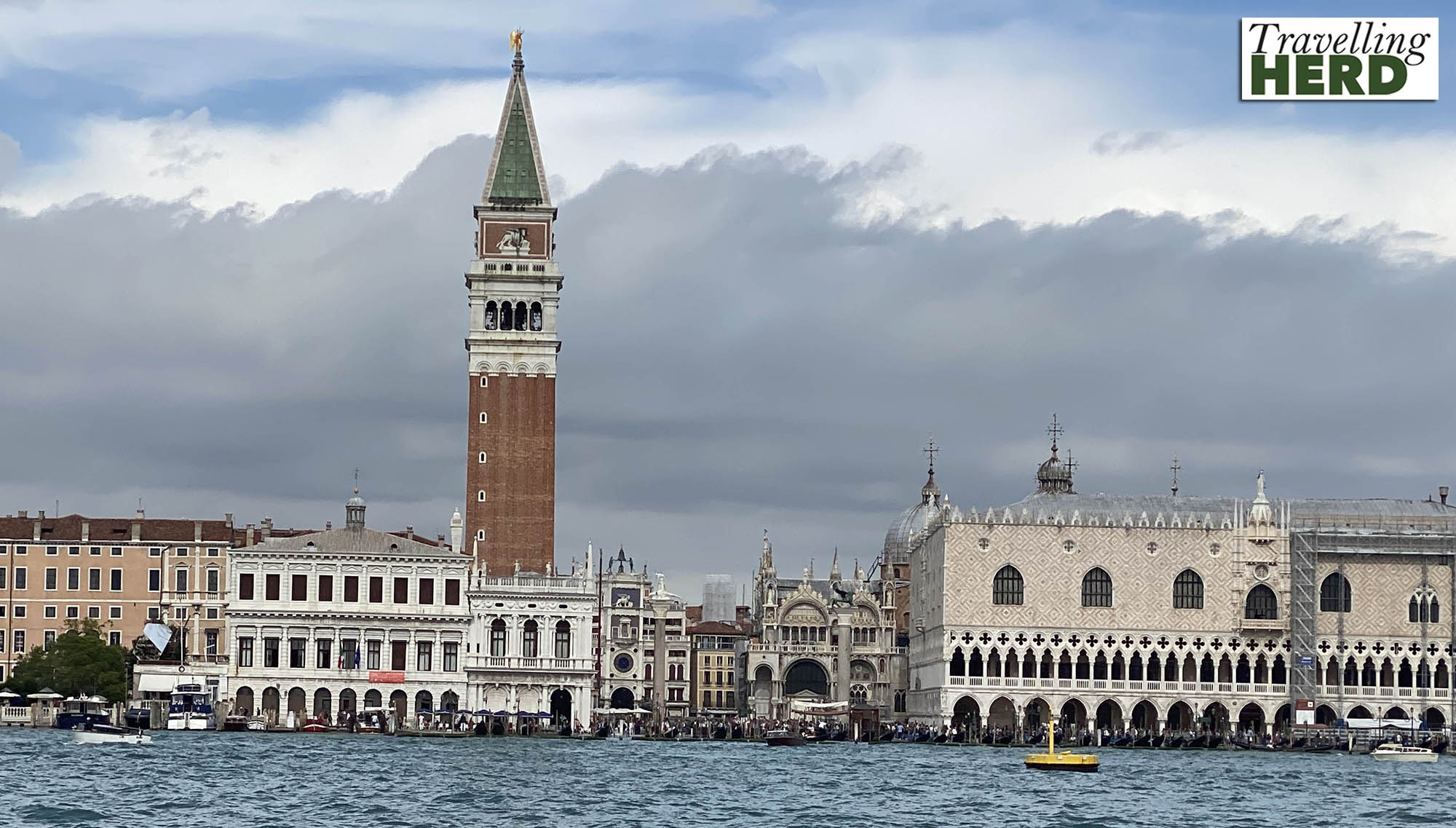
Views of Venice from the water are always stunning.
Robert had been told whilst working as a tour manager here earlier in the year that the police also enforce the speed limits on the canals and waterways: we spotted a speed trap as we passed by San Giorgio Maggiore.
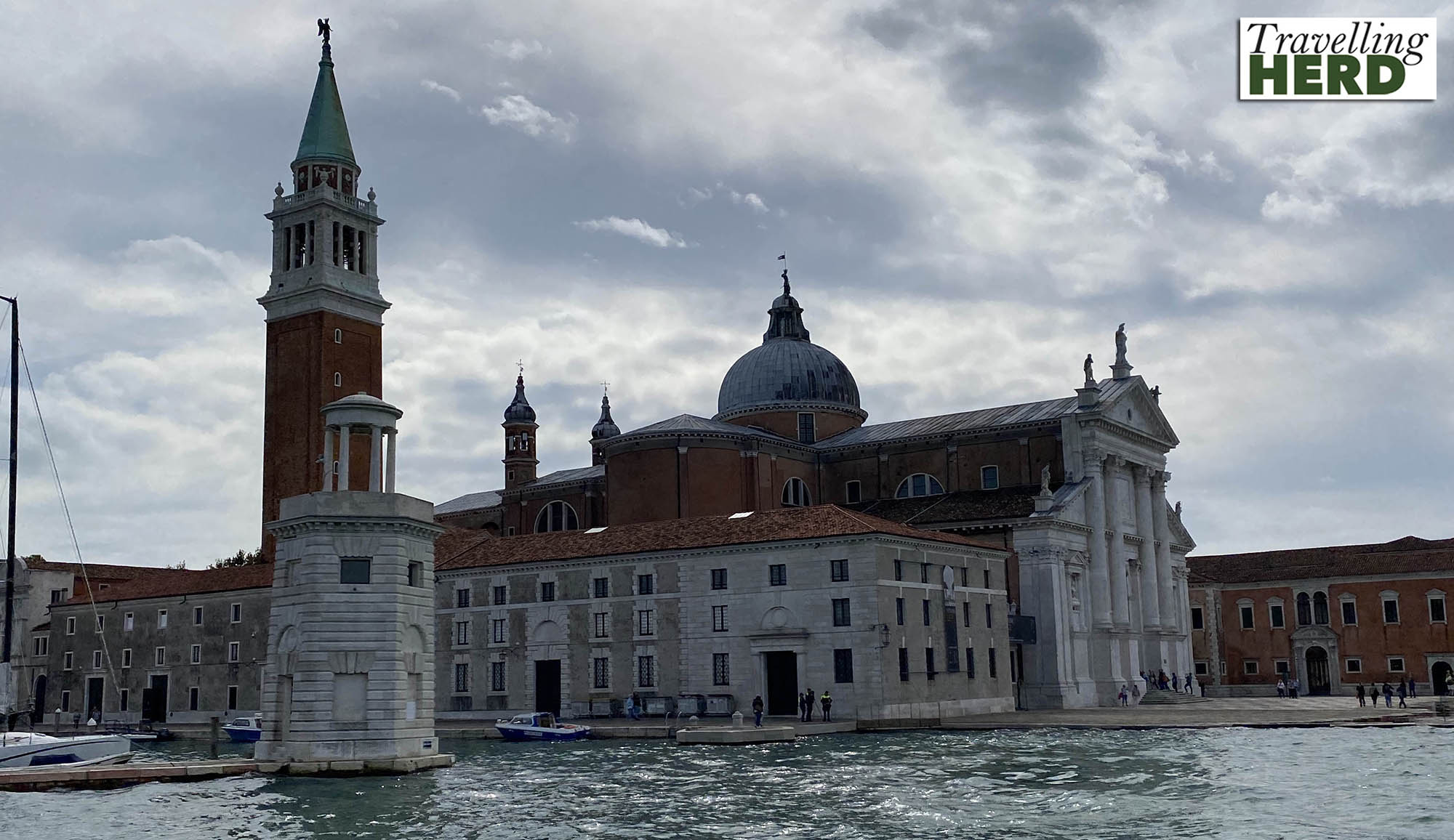
From the Giudecca Canal we cruised past Arsenale and the Lorenzo Quinn [son of the actor Anthony Quinn] sculpture: Building Bridges. Crafted from resin, the sculpture is white like Venice’s distinctive marble. The hands join together in the middle to create a ‘roof of friendship’ and represent six of humanity’s universal values – friendship, faith, help, love, hope and wisdom. Quinn used a baby’s hands as well as his own and those of his 86 year old mother in law as models.
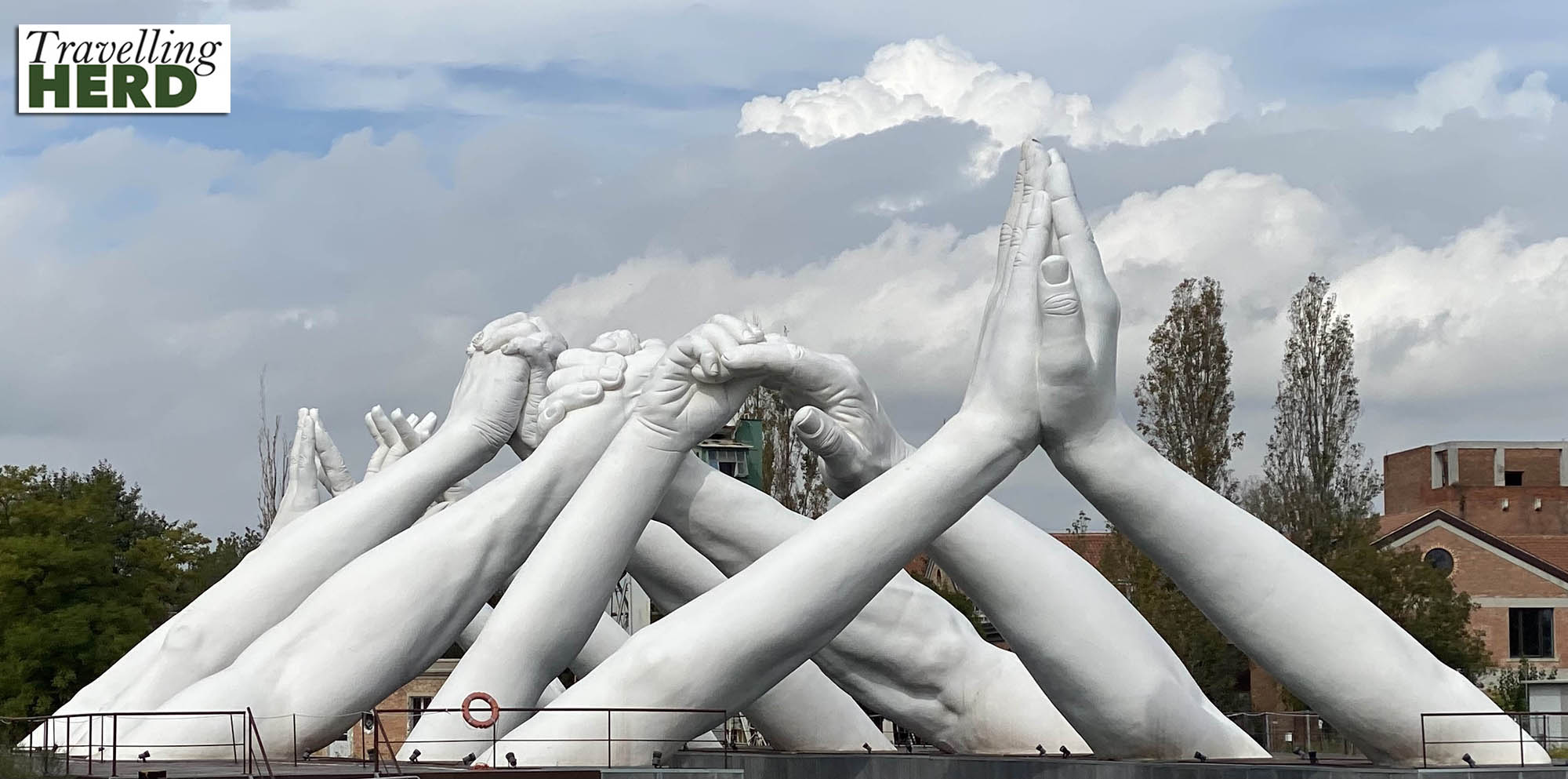
We had not quite decided where we would moor for the night and Liz thought that Torcello might be pleasant.
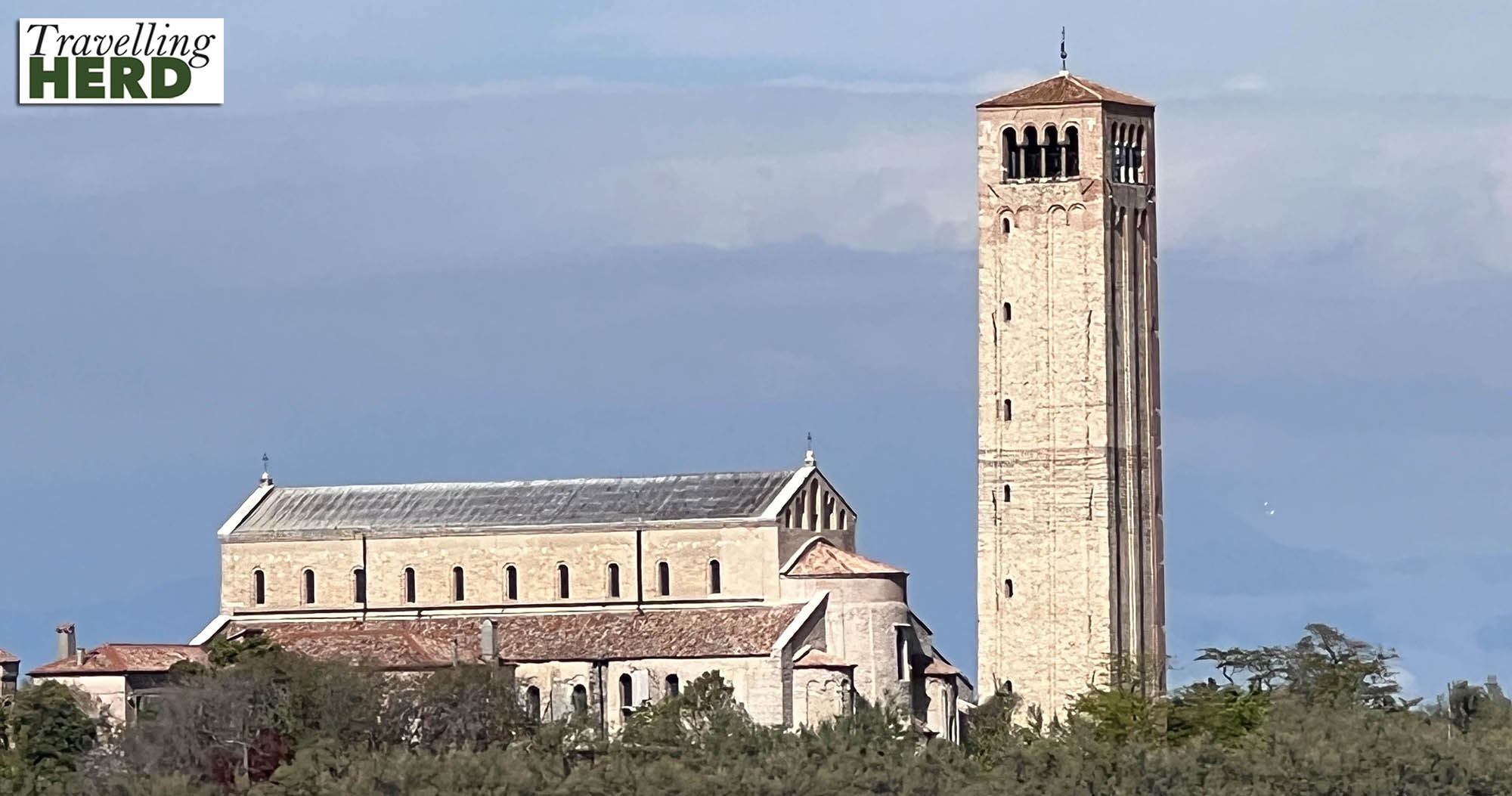
The Basilica Santa Maria Assunta is the oldest building in the Laguna and was founded in 639. The mosaics are splendid and seem even more glorious in the context of their unadorned surroundings.

The water was high and lapping at the doorways when we visited Torcello.
This island was once a thriving community but the canals silted up and as Venice expanded, Torcello’s influence declined.
Now it is home to the restaurant Locanda Cipriani [painted yellow] and a gourmet lunch destination for celebrities such as George Clooney.
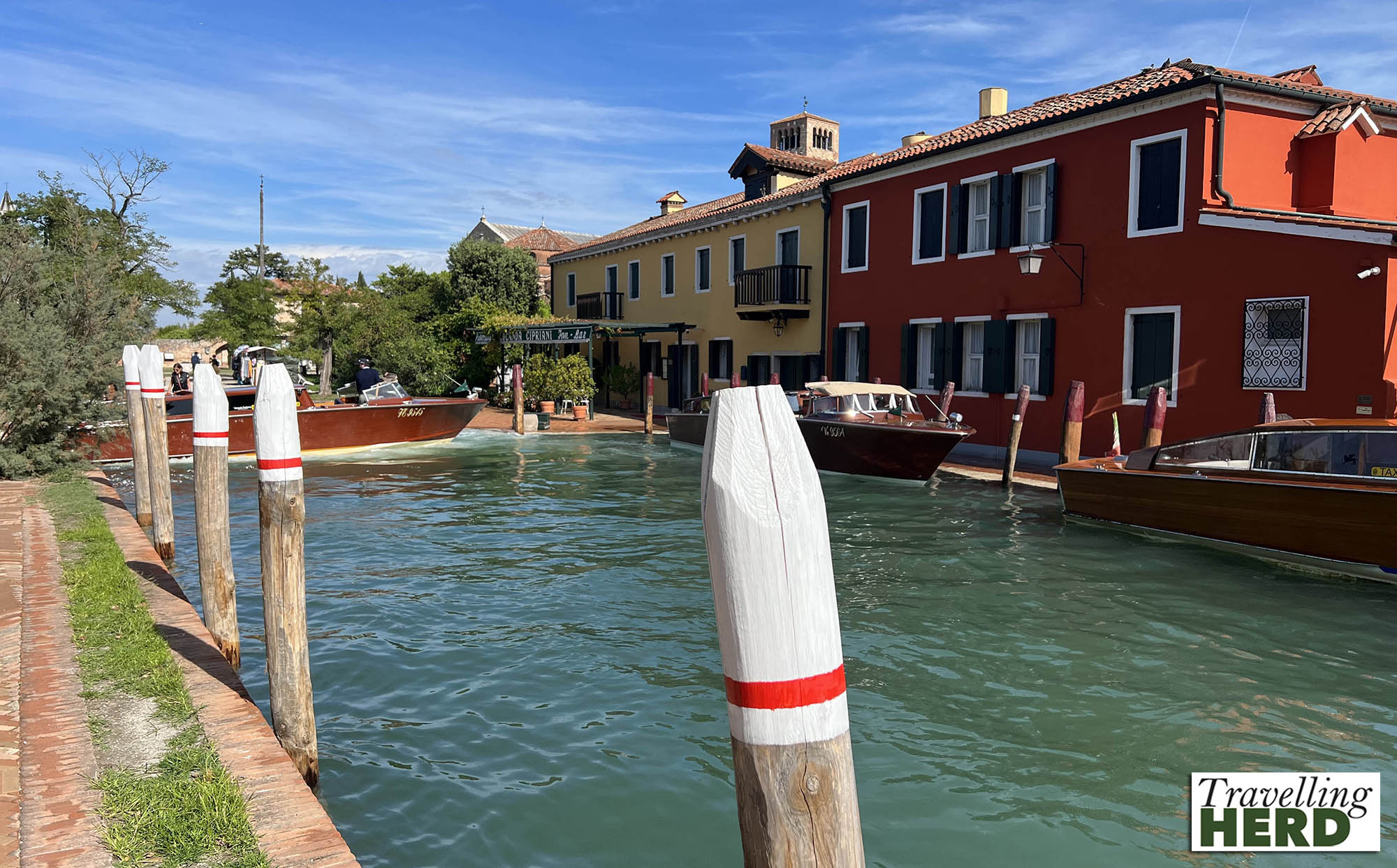
Polished water taxis line the canal waiting for people to finish their meal and return to Venice. Unfortunately everything seems to close late afternoon. We therefore decided that, after visiting the Basilica and Santa Fosca [below], we would continue on and moor at Burano.
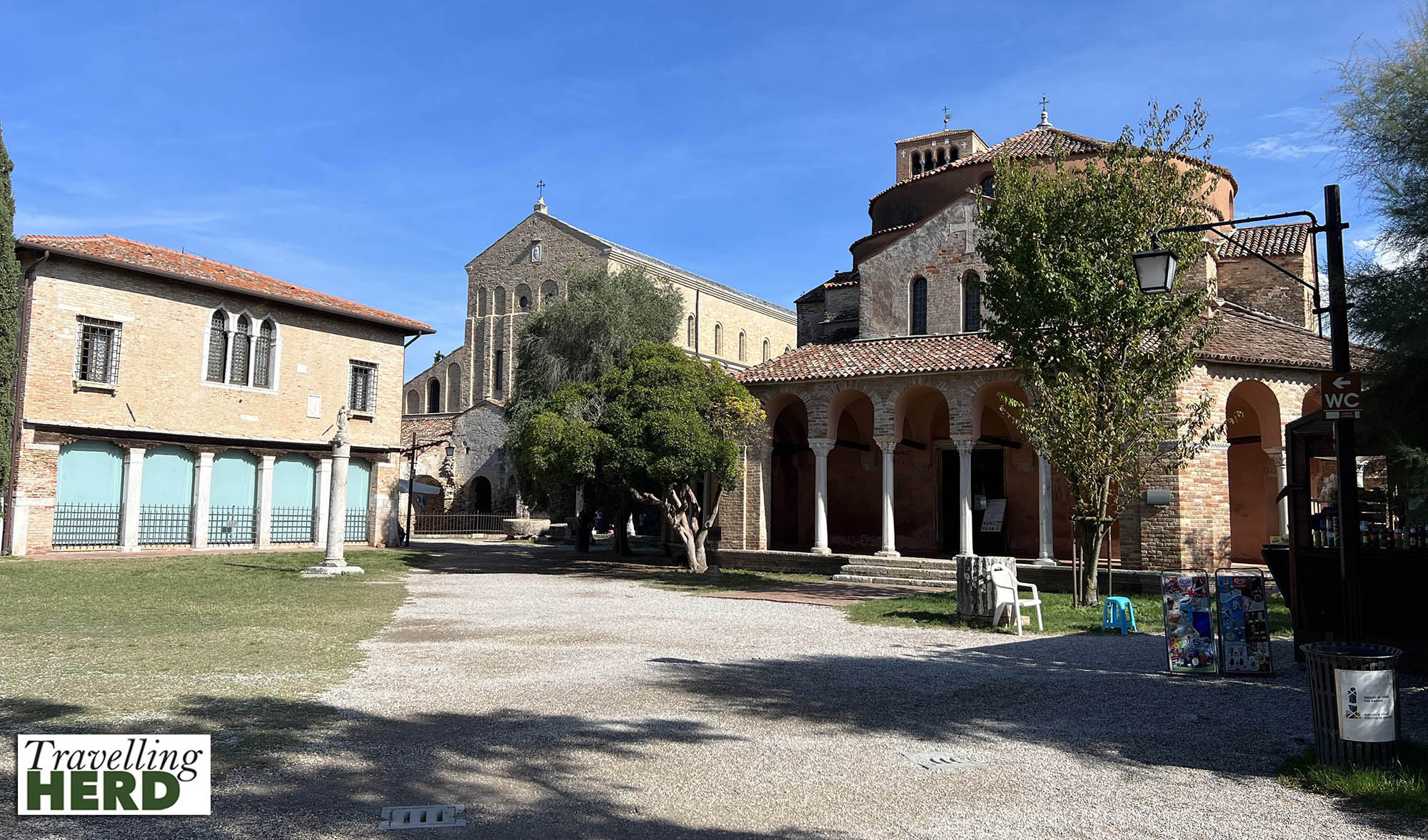
Burano is famous for its brightly painted houses and these are charming even in the rain.
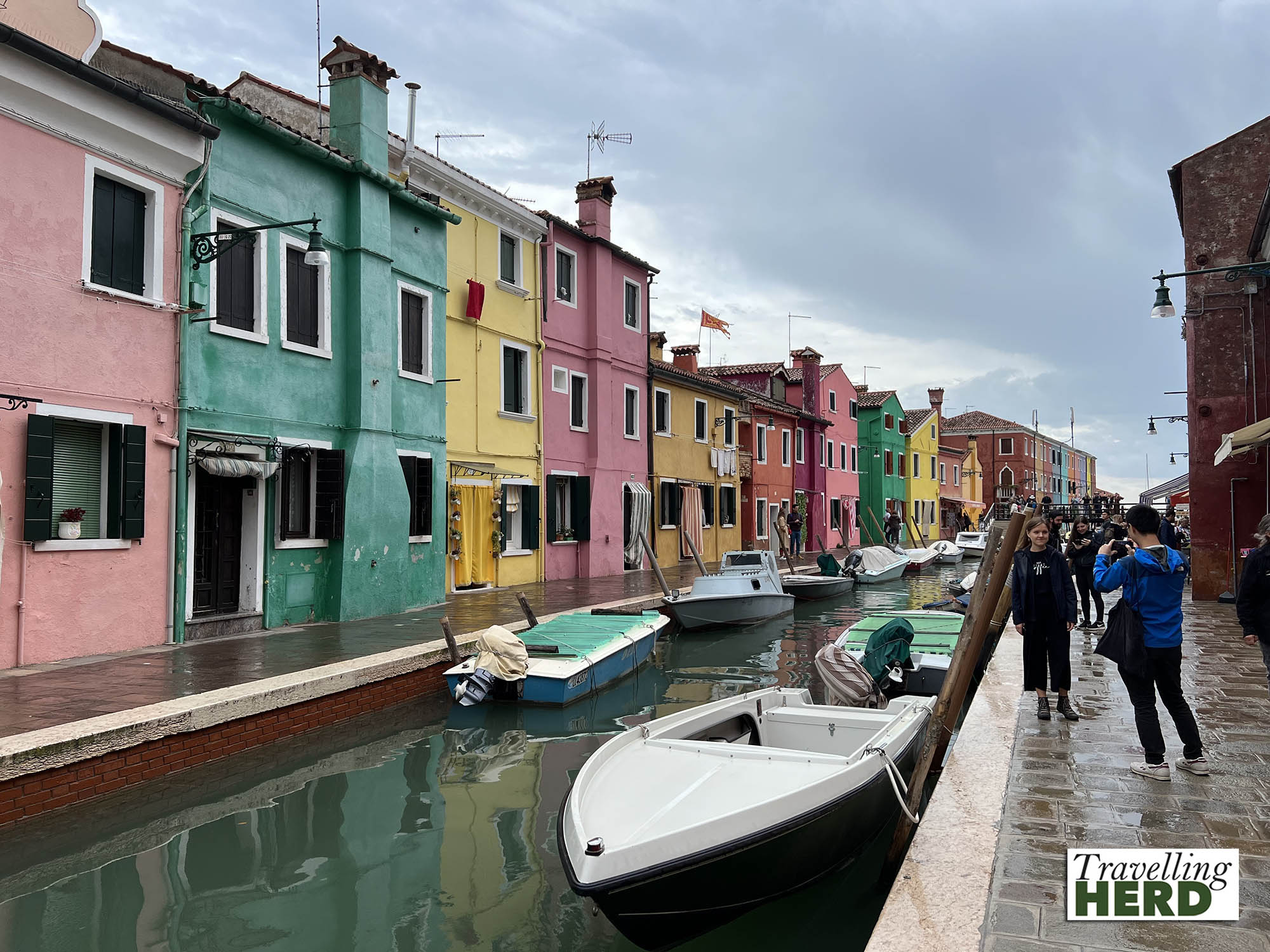
According to legend the residents chose to paint the houses in vibrant colours to help guide their fishermen home as they would be able to see the island more easily.
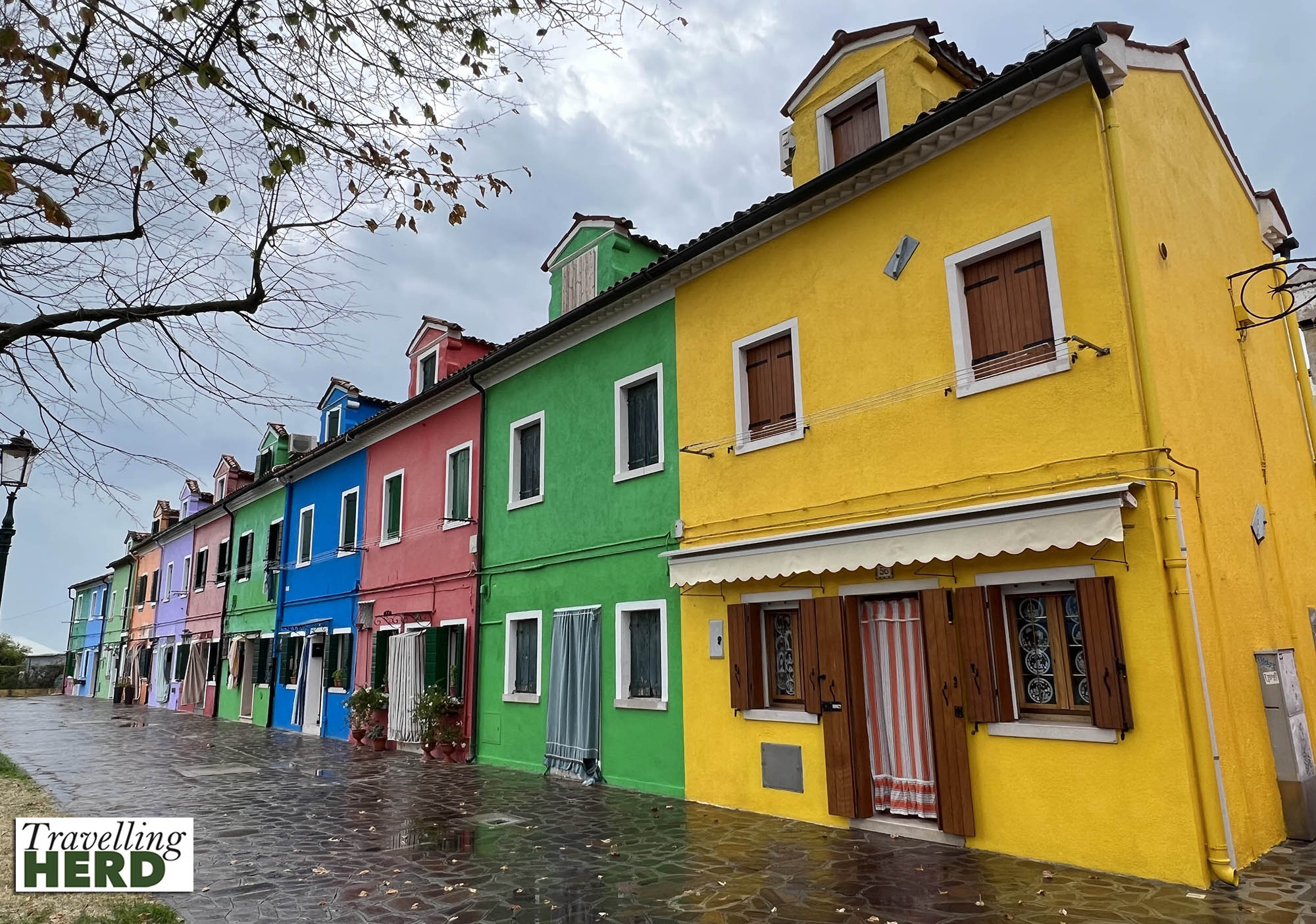
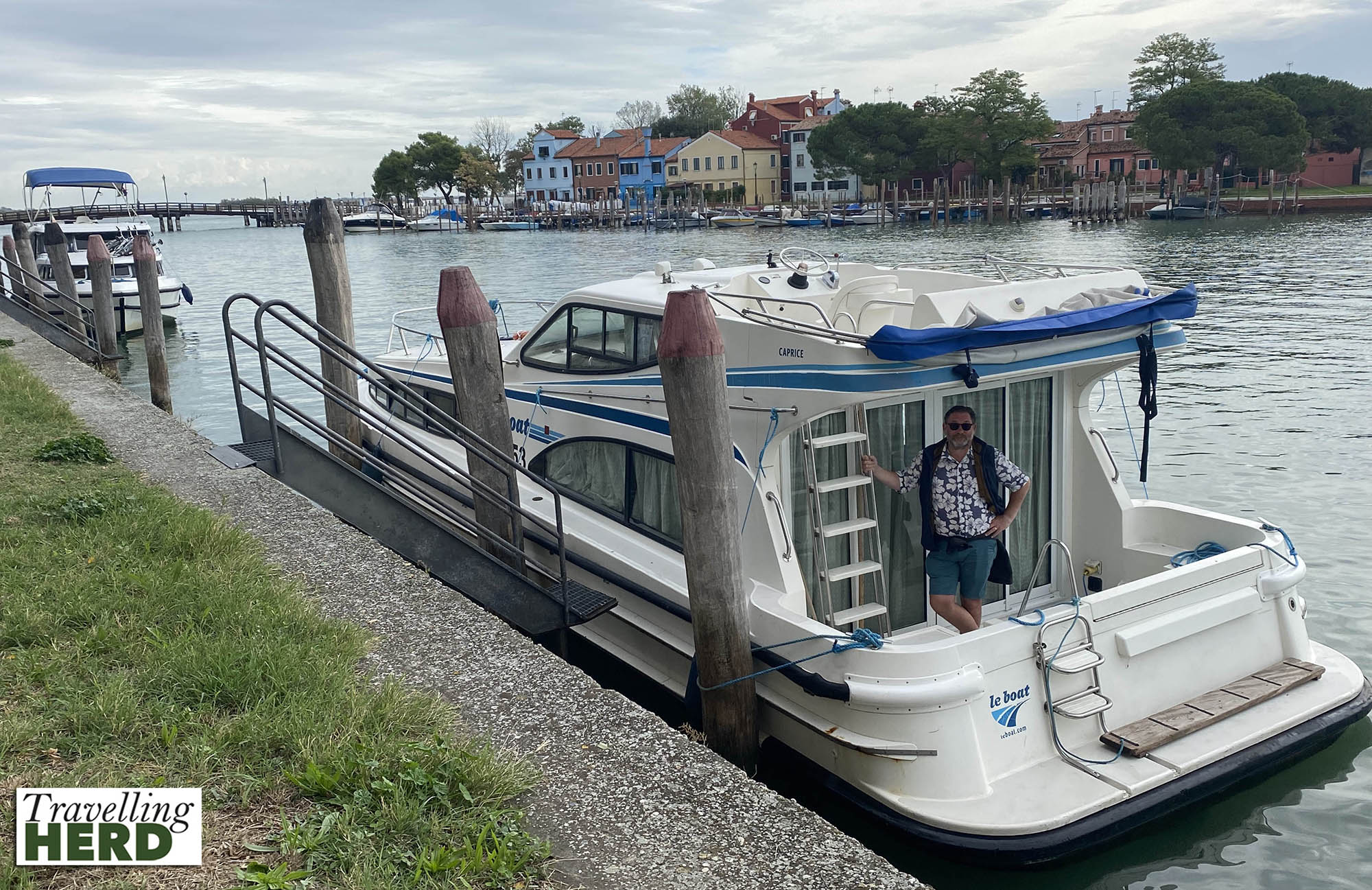
Selfie of the day:

Route Map:






